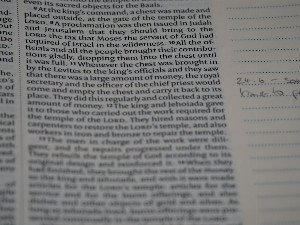Munika Efiyanti
Tinjauan Desain Kerajinan Perak Di Desa Mijen Kecamatan Kebonagung Kabupaten Demak
Introduction
Tinjauan desain kerajinan perak di desa mijen kecamatan kebonagung kabupaten demak. Tinjauan desain kerajinan perak di Desa Mijen, Demak. Mengkaji motif hias, gaya seni (klasik, modern), dan fungsi (personal, fisik, sosial) kerajinan perak dari upacara adat hingga sehari-hari.
Abstract
Kerajinan perak adalah suatu kesenian yang bahan bakunya adalah logam mulia berwarna putih yang dibuat dengan penuh ketekunan, keterampilan serta dapat dijadikan suatu seni yang memiliki fungsi praktis. Kerajinan perak dahulunya bagi masyarakat dipakai untuk perlengkapan adat perkawinan, yaitu pada perhiasan wanita seperti gelang, kalung, anting, cincin, dan perhiasan lainnya. Namun, pada saat sekarang ini kerajinan perak tidak hanya dipakai untuk keperluan upacara adat tetapi juga dipakai untuk keperluan sehari-hari seperti miniatur, pajangan di meja, cincin, kalung, gelang, bros dan bentuk perhiasan lainnya. Pendekatan penelitian ini menggunakan pendekatan penelitian kualitatif dekriptif, dimana peneliti adalah sebagai instrumen kunci atau penentu dalam pengambilan data sehingga tujuan penelitian dapat tercapai. Prosedur pelaksanaan mengkaji tentang struktur seni, gaya seni, dan fungsi seni di dalam kerajinan perak. Teknik pengumpulan data dengan observasi lapangan, wawancara, dan dokumentasi. Hasil penelitian dengan mendeskripsikan struktur seni kerajinan perak yang meliputi motif hias realis yaitu motif yang dibuat sesuai bentuk nyata. Motif hias geometris yang dibuat menggunakan unsur rupa seperti garis. Motif dekoratif yaitu membuat permukaan benda menjadi lebih estetik. Motif astrak yaitu motif yang tidak diketahui bentuk aslinya. Sedangkan gaya seni yang digunakan yaitu gaya seni klasik, gaya seni modern, dan gaya seni gabungan antara klasik dan modern. Fungsi seni yang ada dalam kerajinan perak yaitu fungsi personal, fungsi fisik dan fungsi sosial.
Review
The paper "Tinjauan Desain Kerajinan Perak Di Desa Mijen Kecamatan Kebonagung Kabupaten Demak" offers a descriptive review of silver craft design in Mijen Village, Demak. The abstract effectively highlights the cultural significance and evolving utility of silver crafts, transitioning from traditional ceremonial adornments to contemporary daily use and decorative items. This shift underscores a relevant theme in craft studies, particularly how traditional artistry adapts to modern contexts. The primary objective, as outlined, is to examine the art structure, style, and function within these silver crafts, providing a foundational understanding of a specific local artistic tradition. Employing a qualitative descriptive research approach, the study positions the researcher as the key instrument for data collection, utilizing field observation, interviews, and documentation. This methodology is appropriate for in-depth exploration of artistic and cultural phenomena. The abstract clearly delineates the research's findings across three main dimensions. Regarding the "struktur seni" (art structure), it identifies four types of decorative motifs: realist, geometric, decorative, and abstract. For "gaya seni" (art style), the study categorizes designs into classic, modern, and a combination of both. Finally, the "fungsi seni" (art function) is described in terms of personal, physical, and social utility. These detailed categorizations offer a structured insight into the design elements prevalent in Mijen's silver crafts. This study's strength lies in its systematic documentation and classification of the design elements, styles, and functions of silver crafts in a specific local context, which is crucial for preserving and understanding regional artistic heritage. The clear articulation of how the craft's function has evolved is particularly insightful. While the abstract provides a solid overview of the findings, the full paper would benefit from a more thorough discussion of the implications of these findings—for instance, how the identified styles and functions contribute to the craft's economic viability or cultural sustainability. Further elaboration on the "researcher as key instrument" in the methodology section, perhaps including details on triangulation or researcher reflexivity, could enhance the perceived rigor of the qualitative approach. Overall, this paper appears to be a valuable contribution to craft studies, laying the groundwork for further analytical and prescriptive research on the challenges and opportunities facing traditional artisans in a changing world.
Full Text
You need to be logged in to view the full text and Download file of this article - Tinjauan Desain Kerajinan Perak Di Desa Mijen Kecamatan Kebonagung Kabupaten Demak from Imajinasi: Jurnal Seni .
Login to View Full Text And DownloadComments
You need to be logged in to post a comment.
Top Blogs by Rating
Unveiling the Hidden Journeys:...
By Sciaria
Genetic Dark Matter: The Unsee...
By Sciaria
Beyond the Stereotype: Unpacki...
By Sciaria
Favorite Blog
The Gamification of Governance...
By Sciaria
Unseen Engineers: Nanotech's B...
By Sciaria
The Unspoken Wisdom: Embracing...
By Sciaria





